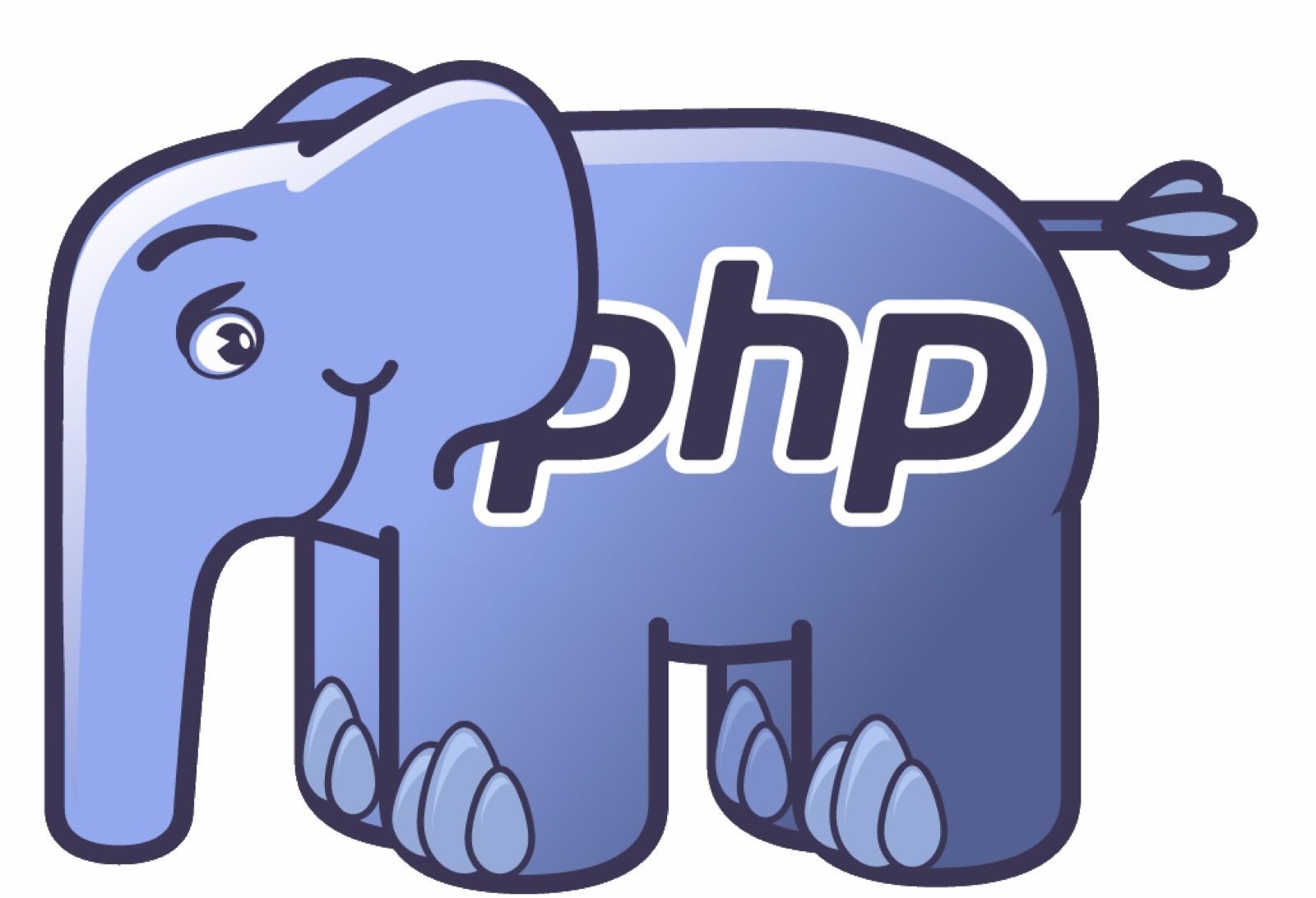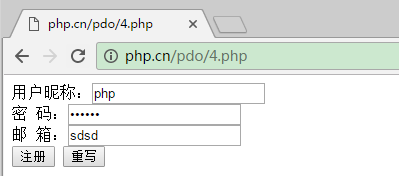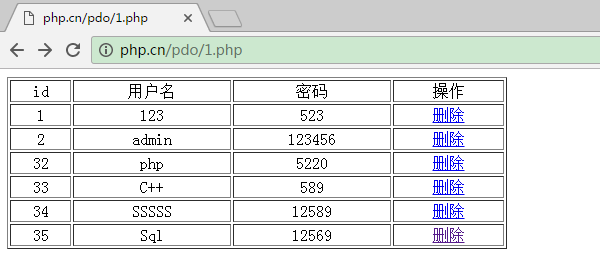10 recommended articles about php pdo
PDO::prepare — Prepare the SQL statement to be executed and return a PDOStatement object (PHP 5 >= 5.1.0, PECL pdo >= 0.1.0) Description syntax public PDOStatement PDO::prepare ( string $statement [, array $driver_options = array() ]) Prepare the SQL statement to be executed for the PDOStatement::execute() method. The SQL statement can contain zero or more named (:name) or question mark (?) parameter markers. The parameters are in SQL will be replaced when executed. You cannot include both named (:name) or question mark (?) parameter markers in an SQL statement; you can only choose one of these styles. The parameters in the preprocessed SQL statement are using PDOSt
1. mysql PDO::prepare usage details

Introduction: PDO::prepare — Prepare the SQL statement to be executed and return a PDOStatement object (PHP 5 >= 5.1.0, PECL pdo >= 0.1.0) Description Syntax public PDOStatement PDO::prepare ( string $statement [, array $driver_options = array() ] )
2. Call the constructor in multiple ways to create a PDO object

Introduction: The construction method can be adjusted in various ways to create PDO objects. The following is to connect MySQL and Oracle servers. For example, we will introduce the various calling methods of the constructor method.
3. Detailed introduction to stored procedures in PDO

Introduction: Stored procedures in PDO allow data to be manipulated closer to the data, thereby reducing bandwidth usage. They make the data independent of script logic, allowing multiple systems using different languages to access the data in the same way. , thus saving valuable time spent on coding and debugging. At the same time, it uses predefined solutions to perform operations, improves query speed, and prevents direct interaction with data, thus protecting the data!
4. Detailed introduction to transaction processing in PDO

##Introduction: A transaction is composed of a sequence of query and/or update statements. Use begin and start transaction to start a transaction, rollback to roll back the transaction, and commit to commit the transaction. After starting a transaction, there can be several SQL queries or update statements. After each SQL is submitted for execution, there should also be statements to determine whether it is executed correctly to determine whether to roll back in the next step. If all are executed correctly, the transaction is finally committed. Once a transaction is rolled back, the database remains in the state it was in before the transaction started. It is like if an edited file is exited without saving, the original appearance of the file will be retained. Therefore, a transaction can be regarded as an atomic operation, and the SQL in the transaction is either full
5. Error handling method two in PDO - errorInfo() method

Introduction: PDOStatement::errorInfo — Get extended error information related to the last statement handle operation (PHP 5 > = 5.1.0, PECL pdo >= 0.1.0)!
6. Error handling method 1 in PDO - errorCode() method

Introduction: There are two methods in PDO to obtain error information in the program: errorCode() method and errorInfo() method! So in the next article, we will introduce these two methods to you one by one!
7. Use exception mode-PDO::ERRMODE_EXCEPTION (Capturing errors in SQL statements in PDO three)

Introduction: Exception mode will create a PDOException and set the erorCode attribute. It can encapsulate the execution code into a try{...}catch{...} statement. Uncaught exceptions will cause The script breaks and a stack trace is displayed to let the user understand where the problem occurred!
8. Use warning mode-PDO::ERRMODE_WARNING (Method 2 for capturing errors in SQL statements in PDO)

Introduction: Warning mode will generate a PHP warning and set the errorCode attribute. If warning mode is set, then unless the error code is explicitly checked, the program will will continue to function the way it does.
9. Use the default mode-PDO::ERRMODE_SILENT (Method 1 to capture errors in SQL statements in PDO)

Introduction: There are three options to choose from to capture SQL statement errors in PDO. Choose the appropriate solution to capture SQL statement errors according to your own development project and actual situation. !
10. Detailed explanation of the fetchColumn() method for obtaining the result set in PDO

Introduction: The fetchCloumn() method obtains the value of the specified column in the next row in the result set and returns a single column from the next row in the result set.
[Related Q&A Recommendations]:
The data int type queried by pdo and thinkphp is also String. Do other frameworks do the same?
python - How to encode only the Chinese in the url
#php - Why is the database empty after I insert html tags into the database?
The above is the detailed content of 10 recommended articles about php pdo. For more information, please follow other related articles on the PHP Chinese website!

Hot AI Tools

Undresser.AI Undress
AI-powered app for creating realistic nude photos

AI Clothes Remover
Online AI tool for removing clothes from photos.

Undress AI Tool
Undress images for free

Clothoff.io
AI clothes remover

Video Face Swap
Swap faces in any video effortlessly with our completely free AI face swap tool!

Hot Article

Hot Tools

Notepad++7.3.1
Easy-to-use and free code editor

SublimeText3 Chinese version
Chinese version, very easy to use

Zend Studio 13.0.1
Powerful PHP integrated development environment

Dreamweaver CS6
Visual web development tools

SublimeText3 Mac version
God-level code editing software (SublimeText3)

Hot Topics
 1666
1666
 14
14
 1425
1425
 52
52
 1327
1327
 25
25
 1273
1273
 29
29
 1252
1252
 24
24
 PHP and Python: Comparing Two Popular Programming Languages
Apr 14, 2025 am 12:13 AM
PHP and Python: Comparing Two Popular Programming Languages
Apr 14, 2025 am 12:13 AM
PHP and Python each have their own advantages, and choose according to project requirements. 1.PHP is suitable for web development, especially for rapid development and maintenance of websites. 2. Python is suitable for data science, machine learning and artificial intelligence, with concise syntax and suitable for beginners.
 PHP: A Key Language for Web Development
Apr 13, 2025 am 12:08 AM
PHP: A Key Language for Web Development
Apr 13, 2025 am 12:08 AM
PHP is a scripting language widely used on the server side, especially suitable for web development. 1.PHP can embed HTML, process HTTP requests and responses, and supports a variety of databases. 2.PHP is used to generate dynamic web content, process form data, access databases, etc., with strong community support and open source resources. 3. PHP is an interpreted language, and the execution process includes lexical analysis, grammatical analysis, compilation and execution. 4.PHP can be combined with MySQL for advanced applications such as user registration systems. 5. When debugging PHP, you can use functions such as error_reporting() and var_dump(). 6. Optimize PHP code to use caching mechanisms, optimize database queries and use built-in functions. 7
 PHP in Action: Real-World Examples and Applications
Apr 14, 2025 am 12:19 AM
PHP in Action: Real-World Examples and Applications
Apr 14, 2025 am 12:19 AM
PHP is widely used in e-commerce, content management systems and API development. 1) E-commerce: used for shopping cart function and payment processing. 2) Content management system: used for dynamic content generation and user management. 3) API development: used for RESTful API development and API security. Through performance optimization and best practices, the efficiency and maintainability of PHP applications are improved.
 PHP vs. Python: Understanding the Differences
Apr 11, 2025 am 12:15 AM
PHP vs. Python: Understanding the Differences
Apr 11, 2025 am 12:15 AM
PHP and Python each have their own advantages, and the choice should be based on project requirements. 1.PHP is suitable for web development, with simple syntax and high execution efficiency. 2. Python is suitable for data science and machine learning, with concise syntax and rich libraries.
 The Enduring Relevance of PHP: Is It Still Alive?
Apr 14, 2025 am 12:12 AM
The Enduring Relevance of PHP: Is It Still Alive?
Apr 14, 2025 am 12:12 AM
PHP is still dynamic and still occupies an important position in the field of modern programming. 1) PHP's simplicity and powerful community support make it widely used in web development; 2) Its flexibility and stability make it outstanding in handling web forms, database operations and file processing; 3) PHP is constantly evolving and optimizing, suitable for beginners and experienced developers.
 PHP and Python: Code Examples and Comparison
Apr 15, 2025 am 12:07 AM
PHP and Python: Code Examples and Comparison
Apr 15, 2025 am 12:07 AM
PHP and Python have their own advantages and disadvantages, and the choice depends on project needs and personal preferences. 1.PHP is suitable for rapid development and maintenance of large-scale web applications. 2. Python dominates the field of data science and machine learning.
 PHP vs. Other Languages: A Comparison
Apr 13, 2025 am 12:19 AM
PHP vs. Other Languages: A Comparison
Apr 13, 2025 am 12:19 AM
PHP is suitable for web development, especially in rapid development and processing dynamic content, but is not good at data science and enterprise-level applications. Compared with Python, PHP has more advantages in web development, but is not as good as Python in the field of data science; compared with Java, PHP performs worse in enterprise-level applications, but is more flexible in web development; compared with JavaScript, PHP is more concise in back-end development, but is not as good as JavaScript in front-end development.
 PHP and Python: Different Paradigms Explained
Apr 18, 2025 am 12:26 AM
PHP and Python: Different Paradigms Explained
Apr 18, 2025 am 12:26 AM
PHP is mainly procedural programming, but also supports object-oriented programming (OOP); Python supports a variety of paradigms, including OOP, functional and procedural programming. PHP is suitable for web development, and Python is suitable for a variety of applications such as data analysis and machine learning.




